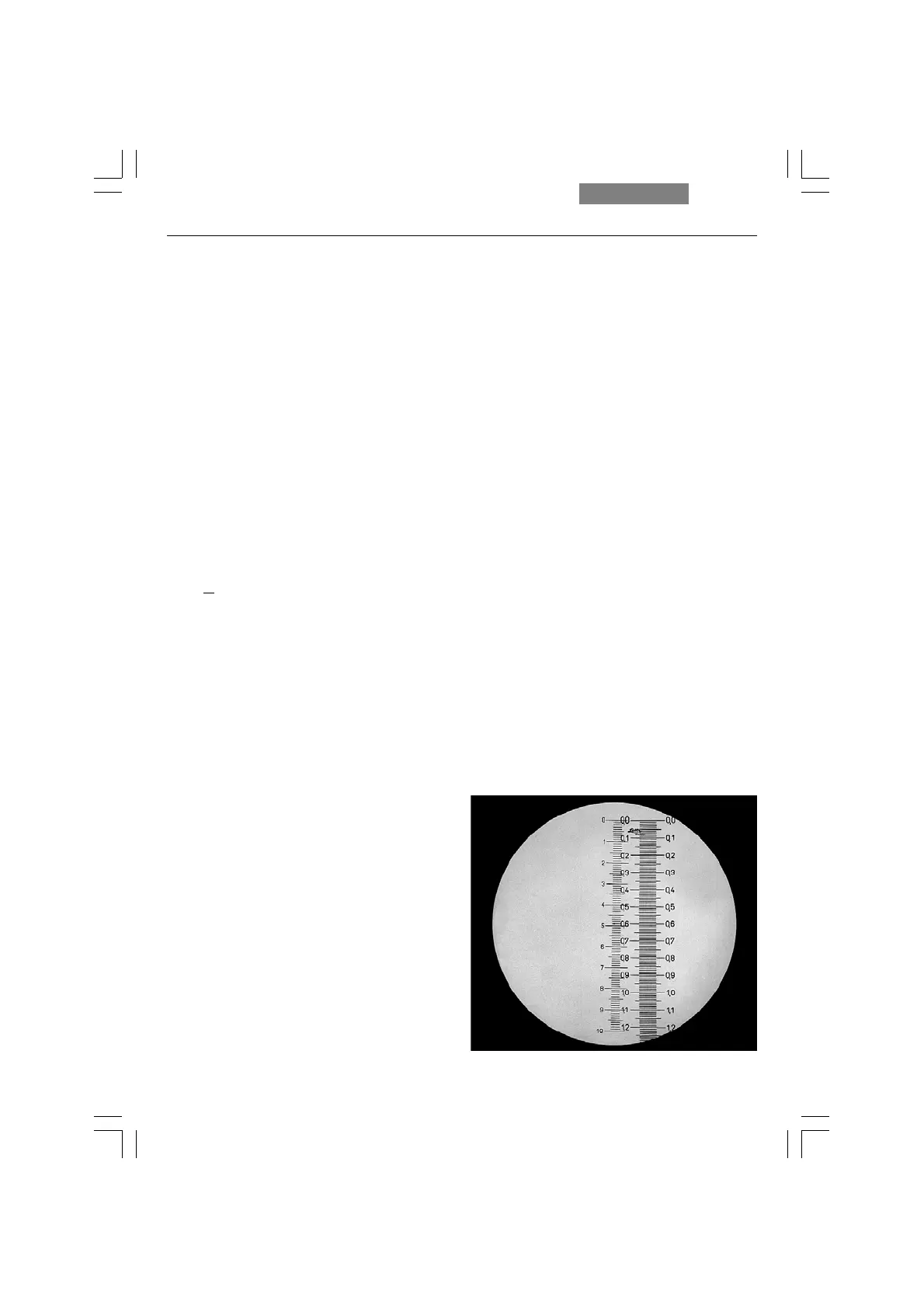63
10. Measurements with the Microscope
10.2 Thickness Measurements
In principle, thickness measurements can be
carried out if both the upper and the lower sur-
face of the object can be clearly focused. The
difference in stage height setting (fine focus
knob: distance between two divisions = ca. 1 µm)
gives a value for transmitted light objects that is
falsified by the refractive index of the object
(which has been "transfocused") and perhaps
immersion oil. The true thickness of the object
detail measured in transmitted light is given by
the vertical stage movement (focusing differ-
ence) d' and the refractive indices n
o
of the ob-
ject and n
i
of the medium between the cover-
glass and the objective (air = 1).
d = d'
Example:
The upper and lower surfaces of a thin polished
specimen have been focused with a dry objec-
tive (n
i
= 1.0), scale readings of the mechanical
fine drive (division spacing = 1 µm): 9.0 and 27.0.
Therefore d' = 18 x 1 = 18 µm.
The refractive index of the object detail was
taken to be n
o
= 1.5.
Thickness d = 18 x 1 x 1.5 = 27 µm.
n
0
n
i
Fig. 66
Scale division of the graticule in the eyepiece (left)
and image of the stage micrometer (right)
Object Marker
The object marker is screwed in instead of an
objective. When rotated, a diamond is lowered
onto the coverglass or object surface, where
circles of variable radii can be scribed to mark
objects.
